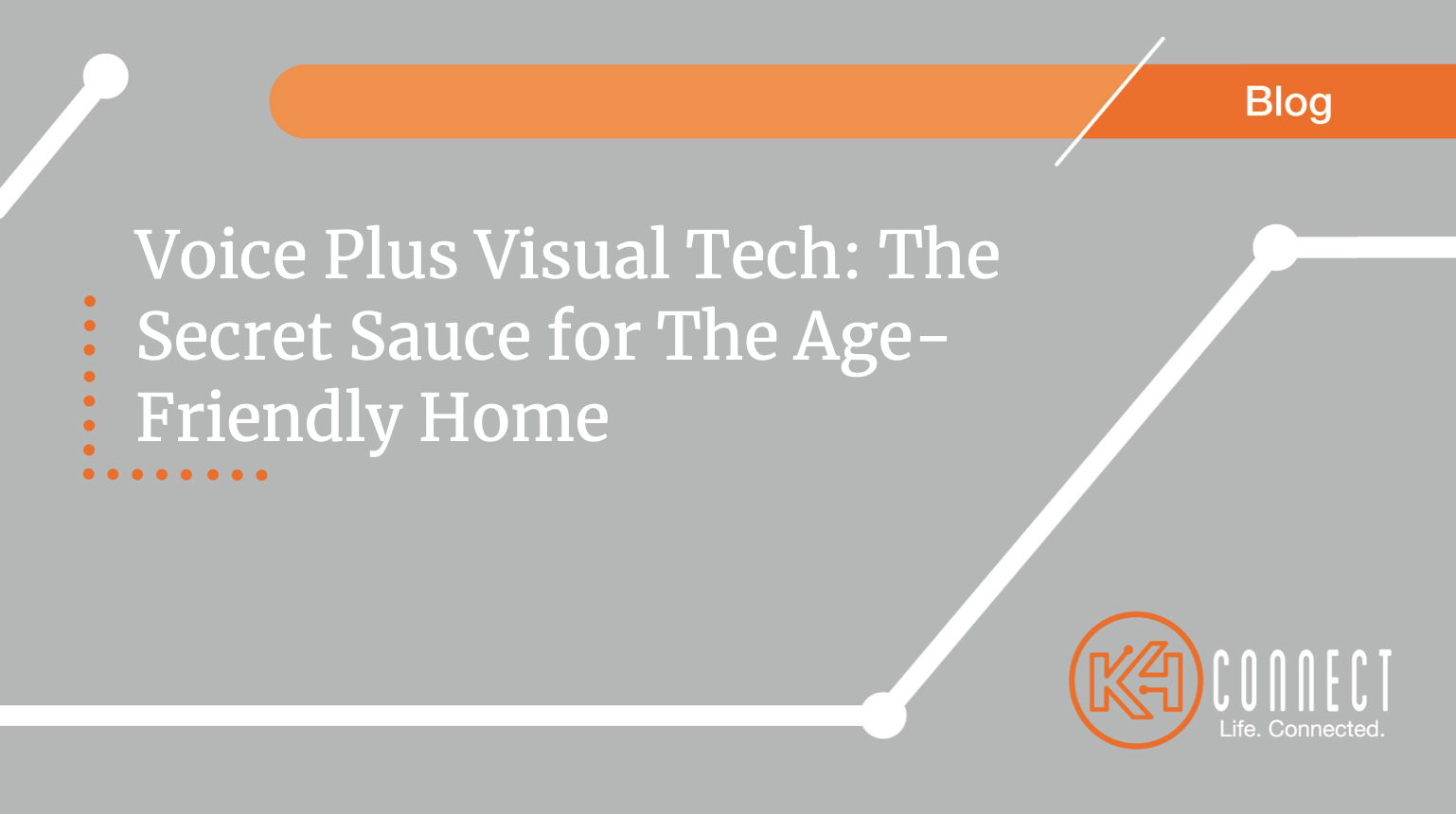Multimodal technology is creating new, meaningful experiences for older adults aging at home.
By: Cindy Phillips | Managing Partner, K4Advisors
January 30, 2022
The sentiment of wanting to age in our own homes (vs. moving to a senior living community or moving along a continuum of care within a senior living community) has not changed during the pandemic. In fact, comparable AARP surveys from 2018 and 2021, both show the consistent pattern of three out of four adults 50 and older wanting to remain in their homes.
What keeps evolving is how people want to live as they age, what is important to them, and how providers can effectively serve them. Given the labor shortage is likely to only get worse, we know technology is part of that solution.
Unfortunately, several obstacles still stand in the way of realizing the full potential technology has to improve the lives of older adults. Many are without the necessary Wi-Fi to support it, others lack the skill to use it, do not trust the payment model or have privacy concerns. Even those who are willing find it cumbersome or complicated to navigate the disparate pieces or to keep up with the pace of change.
One of the challenges for providers in this AgeTech space is not only meeting the needs of today’s diverse customer base, but a more sophisticated one five years from now. It’s easy to get discouraged, believing older adults are not “ready” for this yet. But we must keep innovating with one eye toward the future, and one on more effectively serving the needs of today.
We start by asking two questions – Why aren’t they ready? What is the key to advancing the use of tech that we know could help? I believe it’s simple (not to be confused with easy), we must deliver solutions that are so beneficial and so easy to use that anyone –whether 50 or 85 years of age– will embrace them. We’ve got to flatten the adoption curve, providing value immediately recognized by the user. So much value, they are willing and committed to pushing through the challenges of early use.
As an example, look at one combined set of technologies poised to be a positive force in the lives of seniors if designed and integrated in the right way. Evolving as a cousin to smart speakers, smart displays (e.g., Amazon Echo Show, Facebook Portal, or Google Nest Hub), are an incredible combination of intelligence (AI), human-like voice controls, with the addition of a visually appealing touchscreen.
This voice-plus-visual technology may appear complex on the surface but is oddly similar to the television and the telephone, both devices that older adults have successfully adopted. In fact, I would argue that a device like the Echo Show can provide a more intimate connection than a telephone – showing the face of a driver before they arrive, providing a personalized reminder of the pick-up, or even sharing the estimated time of arrival to offer peace of mind as they wait near the door.
The technology is also more interactive than either the television or the telephone. For example – if the appointment is to attend an event, the Echo Show device can display lunch options (with rich color and even nutrition info), ask if they plan to stay for the meal afterward, place their order, and remind them what to bring along in the way of supplies or a sweater if the venue is chilly.
In a more passive way, the Echo Show can work with smart home technology to send a private note to the daughter when her father has left home and when he returns. Additionally, it can automatically turn on the outside and living room lights at sunset to ensure it is safe and welcoming when they get home.
The above is just one scenario that feels valuable. There are others that make ordering groceries or meals easier (through the voice and screen interfaces). Arranging household services such as house cleaning, snow removal or plumbing repairs through a pre-screened set of vendors accessible with a voice request or the touch of one or two buttons.
The key to any of these is not the display box, it’s the content. Customized to deliver value to the user in a frictionless way. It is the one-time set up, easy voice or single-touch commands, and a trusted means to personalize that content and/or to pay for items as needed. The average 70+ year old may find value in many of these services but does not want to create a notebook of passwords to remember, nor learn a device designed for a 20-year old.
The answer lies in how we marry the simplicity and familiarity of the old TV remote and the telephone or the calendar with handwritten reminders, with the advances of newer tech such as fingerprint and eye scanners, motion sensors and AI predictive capability that can recommend or offer intelligent prompting instead of cumbersome typing. That is the secret sauce that will make voice and visual technology a building block of the age-friendly homes of tomorrow!

